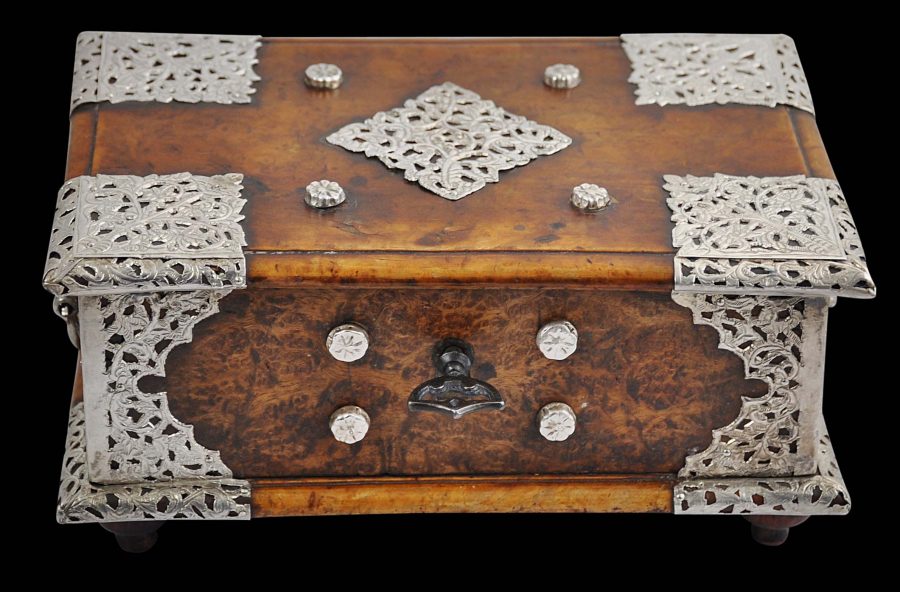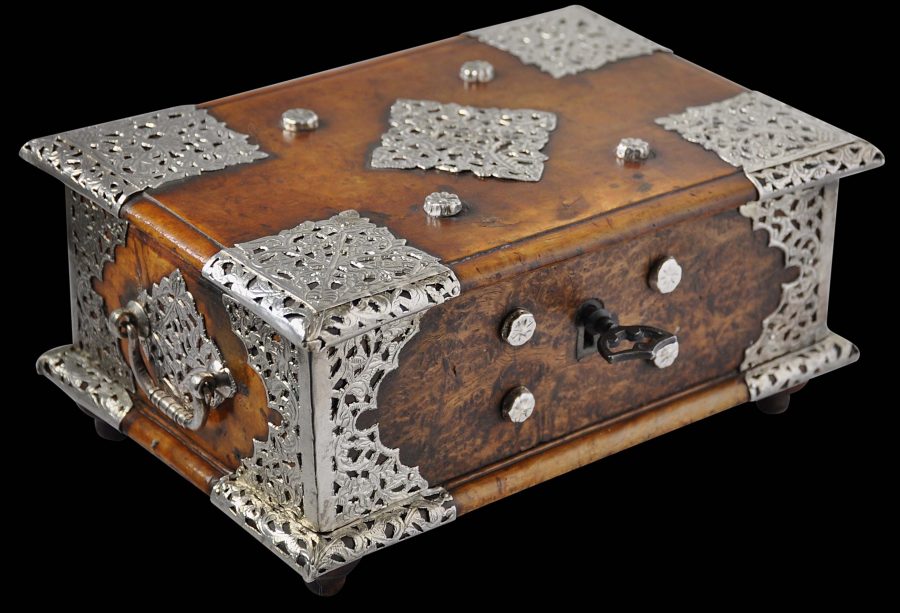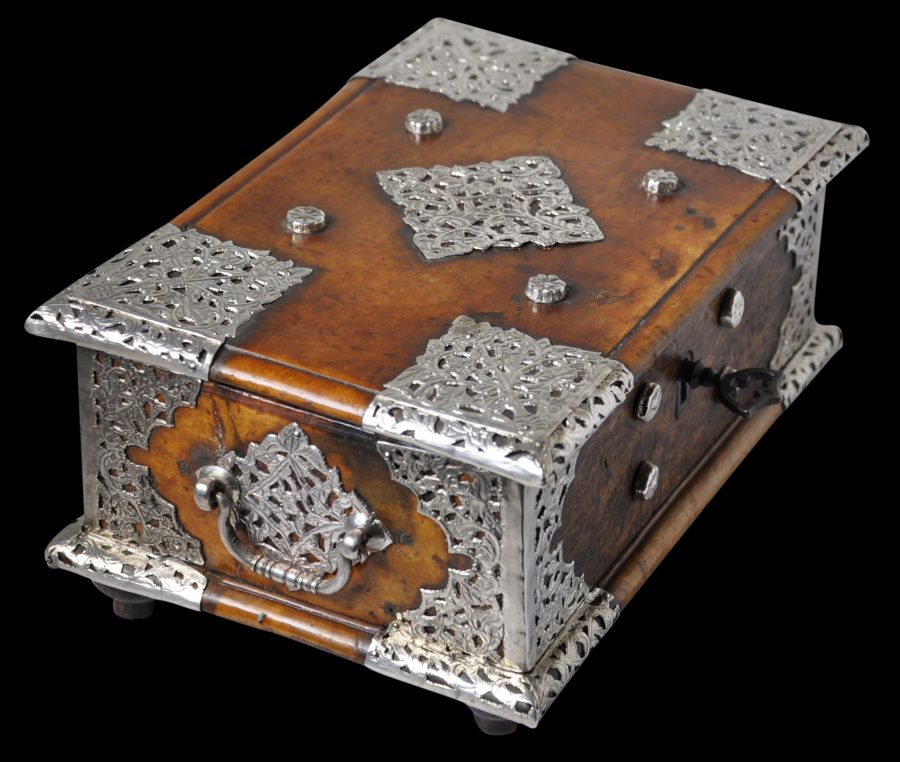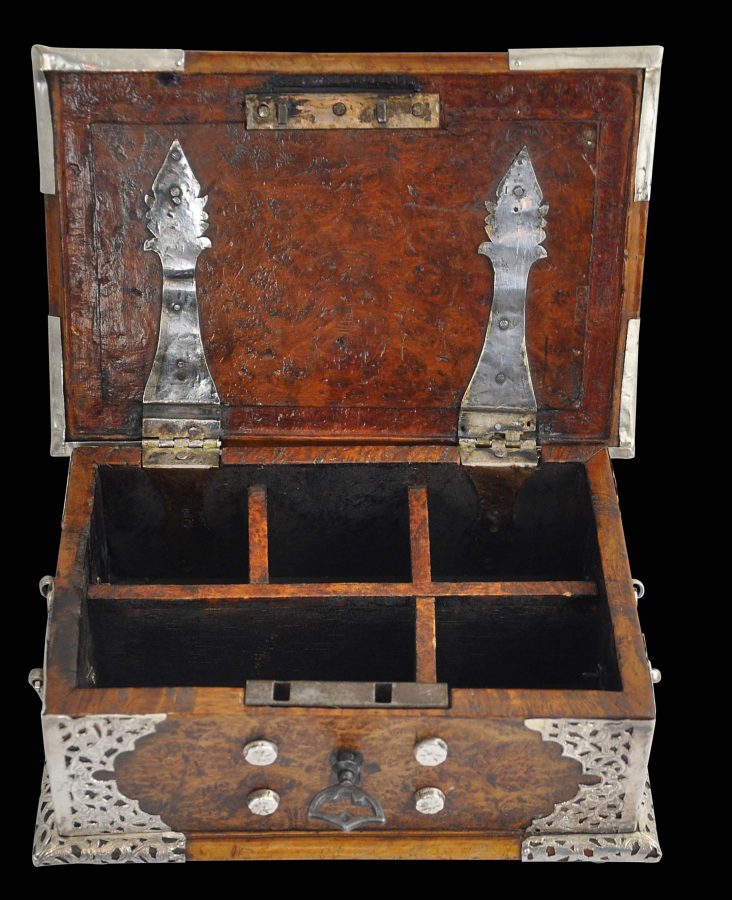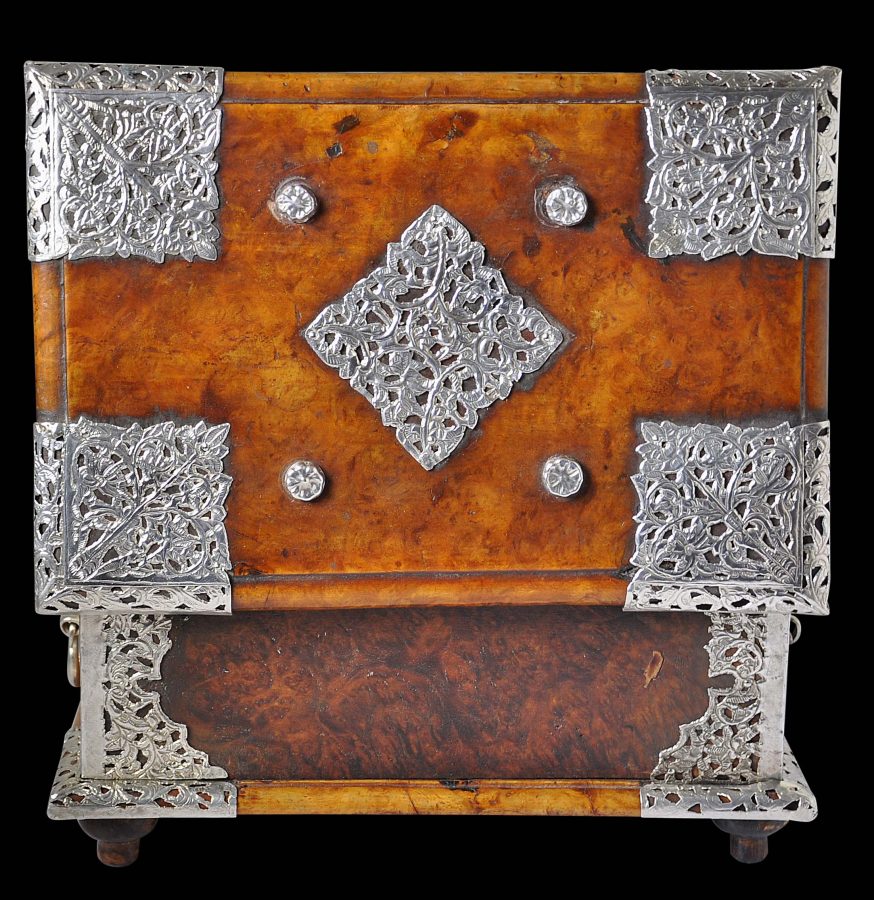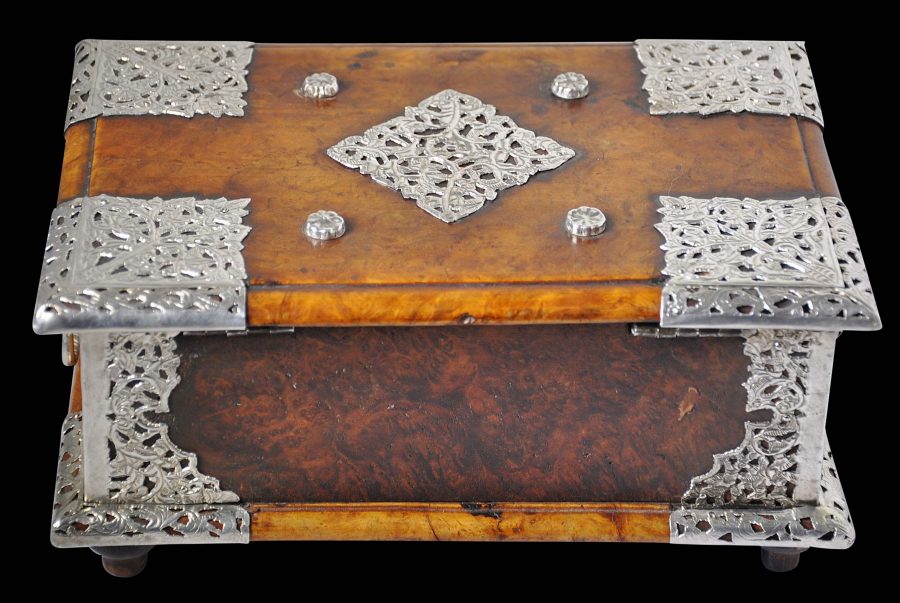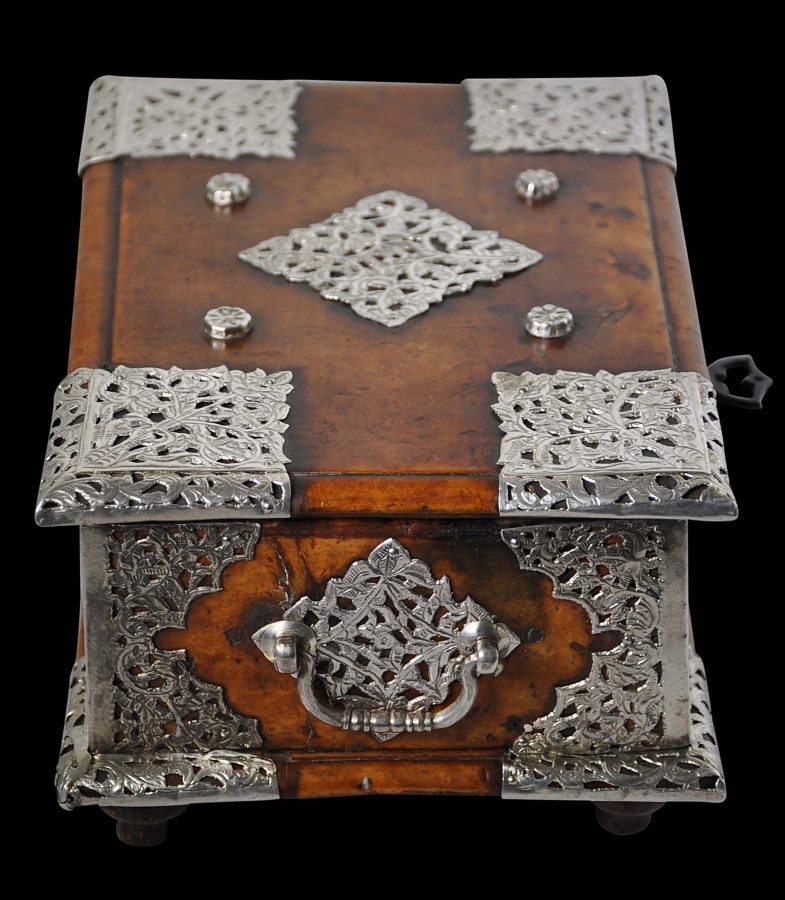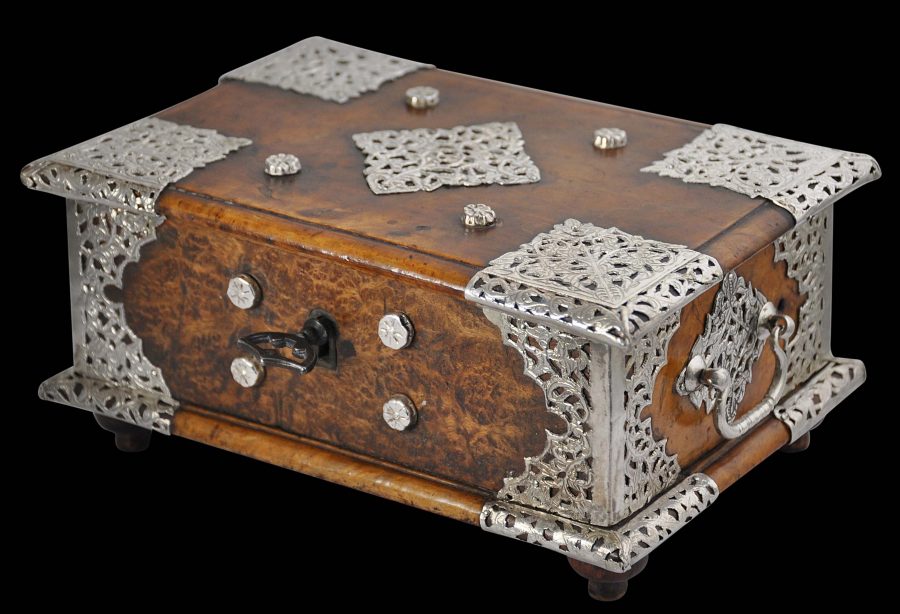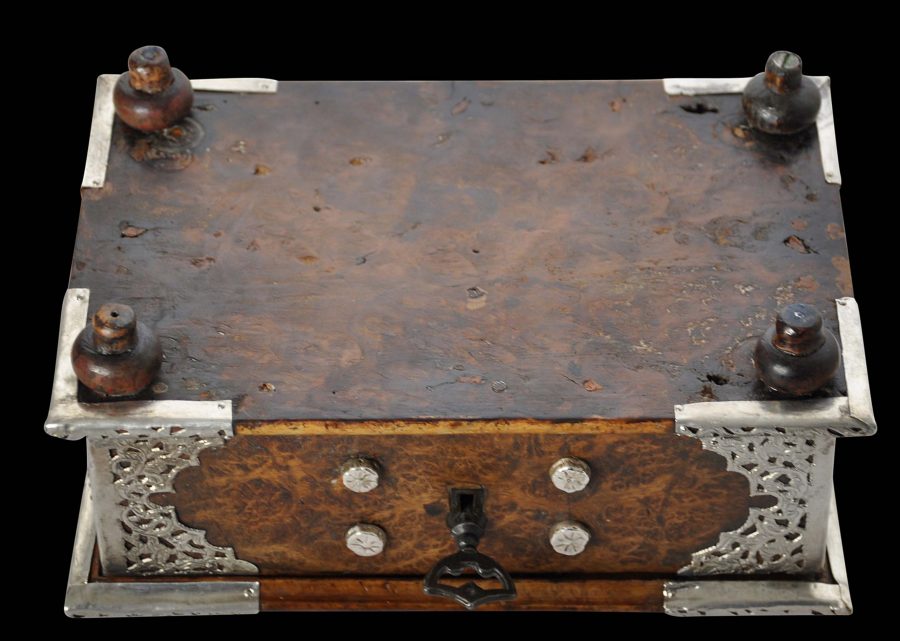Enquiry about object: 3791
Dutch Colonial Betel Box of Amboyna Wood & Pierced Silver Mounts
Batavia, Dutch East Indies (Indonesia) 18th century
height: 9cm, length: 19.5cm, depth: 13.5cm
Provenance
private collection, UK.
This fine Dutch colonial betel or sirih box is from eighteenth century Batavia in the Dutch East Indies, and is composed of bevelled amboyna burlwood with fine, high-grade silver mounts that are not only pierced but seem to be decorated with a tree-of-life pattern.
The silver mounts include two silver handles on either side which emerge from lozenge-shaped silver pierced plaques.
Unusually, the box retains its original internal wooden dividers which separated the box into five smaller compartments. This is where the various elements of the betel quid were kept. Typically, the dividers were removed later when such boxes were used for other purposes.
The box sits on four wooden feet. Although sympathetic to the box, these are likely to be old replacements, as is often the case with these Dutch colonial betel boxes.
Prominent silver hinge flanges are attached to the inside of the box. These attach the lid or cover to the base.
A lock is fitted; it appears to be original. Unusually, a key is present and even more unusually the lock and key still work.
A related box illustrated in Krohn & Miller (2009, p. 252) which is in the Peabody Essex Museums. Another is illustrated in Veenendaal (2014, p. 119).
The Javanese habit of chewing betel was adopted by the local Dutch and exquisite boxes to hold the nut, the betel leaf and the other accompaniments were commissioned by the Dutch. The Dutch realised early on how important betel was to the indigenous people and how it was an essential part of hospitality including with the indigenous rulers. They quickly incorporated betel use with their dealings with local elites. Paintings that show the wives of Dutchmen at the time often show betel boxes prominently displayed. One such seventeenth century painting by J.J. Coeman which today hangs in the Rijksmuseum shows Batavia’s Cornelia van Nieuwenroode with her husband Pieter Cnoll and two of their nine daughters, one of who is shown holding a jewelled betel box (Gelman Taylor, 2009, p. 42).
The fashion for luxurious betel accoutrements and other finery saw the governor-general in Batavia Jacob Mossel issue a decree in 1754 stating that only the wives and widows of the governor-general, the director-general, members of the Council of the Indies and president of the Justice Council were permitted to
use gold or silver betel boxes adorned with precious stones, (Zandvlieyt, 2002, p. 206).
There are no apparent maker’s marks to the silver on this example, although the box clearly is of Batavian origin.
The box is in fine condition. It has a fine patina and the curled grain of the amboyna wood is particularly lustrous and golden from age and use.
References
Eliens, T.M., Silver from Batavia/Zilver uit Batavia, Gemeentemuseum Den Haag/W Books, 2012.
Krohn D.L. & P.N. Miller (eds.), Dutch New York Between East and West: The World of Margrieta van Varick, Bard Graduate Center/The New York Historical Society/Yale University Press, 2009.
Veenendaal, J., Furniture from Indonesia, Sri Lanka and India During the Dutch Period, Foundation Volkenkundig Museum Nusantara, 1985.
Veenendaal, J., Asian Art and the Dutch Taste, Waanders Uitgevers Zwolle, 2014.
Voskuil-Groenewegen, S.M. et al, Zilver uit de tijd van de Verenigde Oostindische Compagnie, Waanders Uitgevers, 1998.


